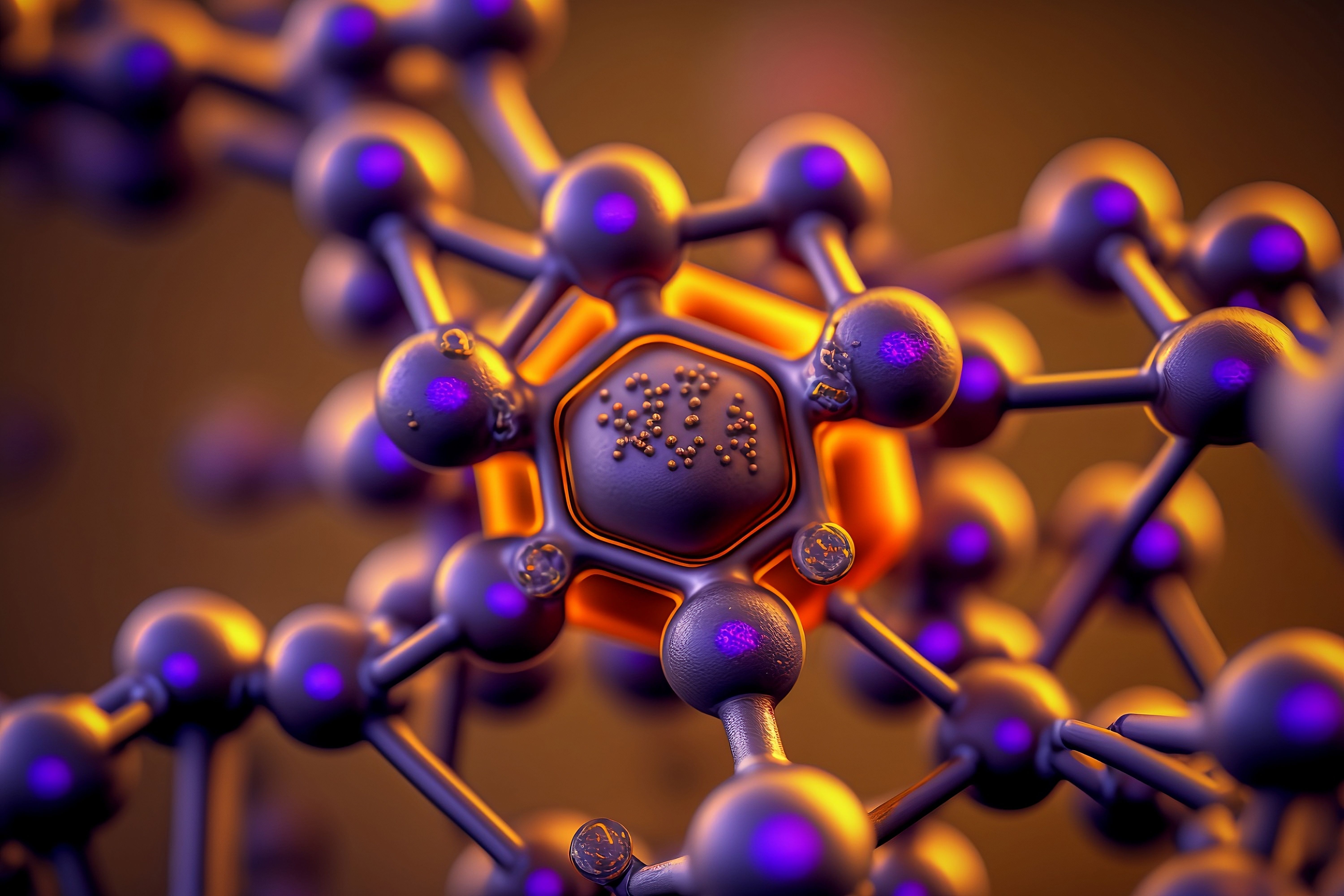New Analytical Methods Used for Quality Control of Radiopharmaceuticals in Nuclear Medicine
Radiopharmaceuticals play an important role in single-photon emission computed tomography (SPECT) in nuclear medicine. Among the numerous radionuclides available, technetium-99m (99mTc) stands as the cornerstone due to its physical properties and versatile redox chemistry. However, the minute concentrations of 99mTc used in scintigraphy have posed significant challenges for quality control and the development of innovative tracers. A recent study featured in the Journal of Analytical Atomic Spectrometry reveals novel analytical techniques that provide insights into the world of radiopharmaceuticals (1).
Technetium molecule structure close up shot. AI generated. | Image Credit: © DmitriRich - stock.adobe.com

The research team introduced a speciation analysis method employing liquid chromatography (LC) in conjunction with elemental and molecular mass spectrometry (MS). Their work unveiled a promising approach using an Orbitrap-based electrospray ionization MS (ESI-MS) method, enabling high-resolution and high-accuracy mass measurements for compound identification (1). Additionally, reverse-phase high-performance liquid chromatography (RP-HPLC) coupled with inductively coupled plasma mass spectrometry (ICP-MS) was employed to separate and detect various technetium (Tc) species (1).
This study differed from previous works by adapting the "isobaric dilution analysis" approach, which was applied in an innovative online post-column dilution setup because of the scarcity of Tc standards (1). This allowed the detection and calibration of not only expected tracers, but also unsuspected Tc impurities in a nontargeted approach. These analytical methods enable rapid on-site quality control of commercially available tracers and facilitate the characterization of experimental tracers without the need for cold reference compounds (1).
In the investigation, a RP-HPLC technique was used to separate Tc species found in four different commercially available tracers and two experimental tracers. The quantification of each distinct species was accomplished through a new online isobaric dilution analysis (IBDA) method implemented as a post-column approach. To address sensitivity variations between Tc and ruthenium (Ru), researchers approximated the elemental sensitivity of Tc in ICP-MS using adjacent 4d-elements (1).
The power of this method was further amplified through coupling it with an ESI-Orbitrap mass spectrometer. This allowed for the tentative identification of the desired tracer using exact masses with high accuracy and the respective isotopic patterns (1). In experimental tracers, researchers successfully separated the tracer compound from pertechnetate, offering the ability to determine their concentrations and purity (1). Notably, beyond routine gamma radiation measurements, parameters like specific activity are now accessible, providing a more comprehensive view of the tracers' quality (1).
The study also investigated four different commercially available tracers, revealing the presence of pertechnetate as an impurity in all formulations (1). The advanced analytical techniques confirmed its identity with high mass accuracy and retention time comparison. Moreover, unidentified impurities were detected in some tracers, highlighting the importance of these novel methods in quality control (1).
This article was written with the help of artificial intelligence and has been edited to ensure accuracy and clarity. You can read more about our policy for using AI here.
Reference
(1) Horstmann, M.; Austrup, M.; Busch, F.; et al. Speciation analysis of Tc radiopharmaceuticals by HPLC-ICP-MS and HPLC-ESI-HRMS. J. Anal. At. Spectrom. 2023, ASAP. DOI: 10.1039/D3JA00257H
Atomic Perspectives: Highlights from Recent Columns
March 3rd 2025“Atomic Perspectives,” provides tutorials and updates on new analytical atomic spectroscopy techniques in a broad range of applications, including environmental analysis, food and beverage analysis, and space exploration, to name a few. Here, we present a compilation of some of the most popular columns.
Pittcon 2025: Highlighting Talks on Atomic Spectroscopy
February 26th 2025At Pittcon this year, there will be numerous sessions dedicated to spotlighting the latest research that uses atomic spectroscopy or elemental analysis techniques. We highlight some of these talks below that might pique the interest of spectroscopists and researchers attending the conference this year.